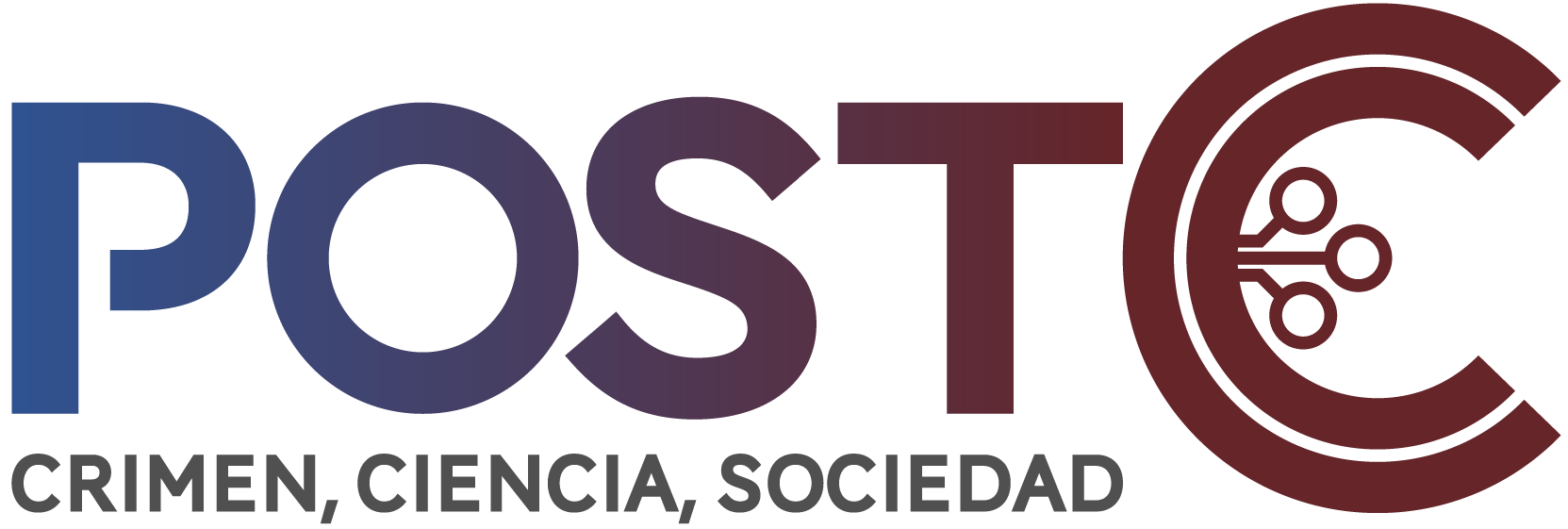Introduction
Because[1] of the COVID-19 crisis, transnational organized crime (subsequently TOC) has needed to innovate its activities during the pandemic in order to protect and accumulate new income (UNODC, 2021b) since the COVID-19 restrictions constrained their regular activities (Global Initiative, 2020a). This new reality has enabled TOC to infiltrate into new sectors and widen their activities (United Nations, 2020a, 2020b).
In this sense, the health sector can be considered one of the most affected ones. With regard to previous research, it is known that some criminal activities performed by TOC during the COVID-19 crisis have been: a) Trafficking substances and medical products (Korenblik, 2021; UNDOC, 2021a); b) The falsification of medical products (mainly personal protective equipment) (INTERPOL, 2020a; UNDOC, 2021a); c) Counterfeit, substandard and illegally diverted pharmaceuticals (Europol, 2020; Global Initiative, 2020a), as masks, cleaning products, gloves, etc. (European Commission, 2021); d) Scams about medical supplies, stock investment, and health infrastructure (Europol, 2020; UNDOC, 2020a); e) Illicit online trade of medicines, medical products, PPE, and hygiene products (INTERPOL, 2020c). f) In relation with COVID-19 vaccine, defraud falsification, theft, and illegal advertising (European Commission, 2021; INTERPOL, 2020c, 2021; UNDOC, 2021a), unofficial vaccine supplies (EUROPOL 2021, UNODC, 2021), and attempts of scams (European Commission, 2021); g) Cyber-attacks through malicious domains, malware and ransom ware against health infrastructure (Europol, 2020, INTERPOL, 2020a); and h)Acquiring control of legitimate pharmaceutics (UNDOC, 2021b).
Different circumstantial factors are behind the targeting of health sector, such as the extraordinary demand for medical supplies, the scarcity or shortage in goods, the gap in the provision of certain products, and social disinformation, fear, and anxiety (European Commission, 2021; Global Initiative, 2020a; INTERPOL, 2020a; Korenblink, 2021). As a result, not only did TOC participate in medical supply chains and the health systems (Global Initiative, 2020a) but also achieved wide infiltration in the public economy[2] and health sector (Korenblik, 2021, UNODC 2021a, 2021b).
The infiltration of TOC into the health sector and its market has significant consequences such as the distortion of market rules (European Commission, 2021), the undermine or harm to pharmaceutical companies, the reduction of funds for research and innovation about COVID-19 (European Commission, 2021; Europol, 2021), the endanger of the effectiveness of economic recovery actions (European Commission, 2021, UNDOC, 2021b), the detriment of the national public health budget (UNDOC, 2021a), and the compromised the effective response against the pandemic (Global Initiative, 2020a) and social wellbeing (INTERPOL, 2020c).
This research is based on the premise that traditional approaches to combat TOC, both domestic and international, are insufficient to fight pharma crimes and subsequent infiltration into the legal economies. A priori, traditional anti-TOC strategies present two main problems to deal with the new challenges. The first one is that these crimes could remain unidentified for both the victim and law enforcement enabling organized criminals to grow and spread even further. For instance, pharma crime victims are not aware of being victimized because they do not have enough capability to detect substandard or falsified products (UNODC, 2021a). The second problem is that TOC has achieved infiltration in the legal economies (Korenblik, 2021, UNODC 2021a, 2021b) through its participation in the market chain that is difficult to track, or own/control legal enterprises. The question of how these activities can be effectively detected remains open.
Considering the aforementioned, this article aims to better understand how TOC has capitalized on the pandemic on the example of health services to infiltrate into the legal States’ economies.
Theoretical framework
The research is based on the postulates of “profit derived crime theory” (Naylor, 2003). This theory argues that profit-derived crime should be explained in economic rather than in sociological terms. In his work, Naylor (2003) distinguishes among three main types of profit crime: a) Predatory crimes against private citizens, business institutions, and the public sector; b) Market-based offenses; and c) Commercial crime that involve the illegal redistribution of lawfully earned income. The strength of this theory lies in its aim – to explain the “what” and the “how”. This approach is useful to explain new crimes (what) and new schemes (how) of TOC.
According to the theory, in this research, the analysis of organized crime is based on economic features (not on social or cultural features) as income generation is the main driving force behind TOC, and it directly affects national economies and the welfare of citizens.
Research objectives
The specific objectives of the research are:
O1. To determine the extent and the schemes of pharma crimes committed by TOC in European Countries.
O2. To understand how TOC can infiltrate into the national economy through pharma crimes.
O3. To clarify whether pharma crimes can imperil European States’ economic recovery plans.

Methodology and analysis strategy
The present research uses a qualitative approach to study pharma crimes. The research techniques developed have been case studies and interviews.
This research has used the following cases to dive into its object of study:
- The supply of substandard ventilators in Bosnia and Herzegovina (UNODC, 2021a).
- The cyber-attack against Brno University Hospital in the Czech Republic (Cimpanu, 2020).
- The face masks scam geared towards German health authorities (INTERPOL, 2020b).
- Italian Mafia’s activity in the healthcare system and welfare provision (Global Initiative, 2020a, 2020b, UNODC, 2021b).
- The falsification of medical face masks in Spain (UNODC, 2021b).
The analysis of case studies comprehends several aspects: a) the COVID-19 incidence in the State; b) Pre-COVID-19 TOCs’ characteristics, activities, and fight; c) New criminal opportunities raised by COVID-19; d) The actual pharma crime suffered by the country; and e) the new measures implemented by the Country after the victimization and its nature.
The second research method used is semi-structured interviews with different stakeholders, organizations as OSCE, UNODC, UNICRI, Global Initiative against TOC, representatives of NGOs, governmental authorities, and even a criminal. To build up the sample snowball sampling was used: we made initial contact with experts in the research topic and then we used them to establish new contacts with others (Bryman, 2012). Seven interviews were conducted in person, via teleconference, and in written form. They were recorded and transcribed. The transcription has been coded (Bryman, 2012). The categories used have been: “new activities”, “dangerousness of the activities” (in terms of economic stability), “infiltration of TOC in States’ and “the actual imperil of economic recovery plans”.
Results
Case studies
The case studies covered 5 countries with a different range of COVID-19 incidence. The main result indicates regardless of the incidence and criminal indexes, the COVID-19 pandemic created opportunities for criminals to infiltrate and capitalize in each of the countries.
In Bosnia and Herzegovina, corrupted government officials ordered overpriced substandard ventilators; in the Czech Republic, it was a profit-oriented cyber-attack on a hospital victimizing vulnerable groups; in Germany, the government was scammed trying to purchase face masks; in Italy, Mafia targeted disadvantaged people and weak businesses; and in Spain, health services were compromised with the influx of fraudulent masks. While in some countries like Italy and Spain the criminals unfolded their activities on a large scale, in the rest of the countries they used unsystematic targeted campaigns.
In all five countries, some constant elements, such as the participation of Mafia or Mafia-style organized groups (e.g. clans) were identified, as well as the strong presence of economically profitable crimes (diverse kinds of trafficking or smuggling). In addition, the modus operandi of these crimes increasingly moved to cyberspace that can be explained by the mobility restrictions and border closing.
Countries were not prepared to effectively prevent and counter the described types of crime. The reasons include the shift in modus operandi (need of specific knowledge to counter cybercrime, criminals’ technical advancement), the infiltration of criminals into the new market (medical supply is not a usual object in the criminal market) and subsequent lack of preventive measures. Consequently, each State has responded to the crime in its way. Mostly, they have taken reactive measures, to neutralize the imminent damage, like Germany, which managed to cancel the economic transaction. However, some countries took action to prevent such crime in the future. For instance, the Czech Republic strengthened the cyber security system of the healthcare sector, and Spain conducted awareness-raising activities for its population.
Interviews
The interviews have confirmed that the TOC activity is determined to make an economic profit. Thus, during the COVID-19 pandemic, organized criminals stayed focused on financial benefits and the market. The interviewees explained how TOC has capitalized on the new needs raised by COVID-19. In the first place, Interviewees 1 and 3 narrated that TOC took advantage of the extraordinary market demand for medical products and PPE, given its global shortage. In the second place, TOC exploited fear of the unknown among the population (Interviewee 1) and new/existing economic, social, and institutional vulnerabilities (Interviewee 5) as enabling for criminal activity factors.
Interviewees 1, 3, 4 and 7 manifested that the criminal schemes during the pandemic have not been significantly changed, on the contrary the modus operandi has been modified to meet new needs and utilize new vulnerabilities. For instance, cybercrime used the same tactics but reoriented on medical-related products (PPE, vaccines) or enjoyed the advantages of global digitalization (“nephew trick”, fishing, blackmail).
However, the dangerousness of TOC activity had an impact on two domains: the economy in general and the efficiency of recovery plans, and the people’s health. Regarding the infiltration of TOC into the legal State economy, the following patterns were used:
- Infiltration into the lawful medical supply chain (Interviewee 1 and 3).
- Infiltration into the unlawful medical supply chain (Interviewee 1, 2, and 3).
- Application for governmental financial assistance through legitimate companies (Interviewee 3) and receiving public recovery funds (Interviewee 5).
- Enterprise and business control (directly and indirectly) and subsequent money laundering (Interviewee 4).
- Participation in purchase contracts with the State and national authorities through the corruption mechanisms (Interviewee 6).
The main consequence of TOC infiltration into national economies is the threat to the effectiveness of economic recovery plans (Interviewee 1) by participating in the medical economic market (Interviewee 1), acting as a supplier of goods and services to disadvantaged communities (Interviewee 3, 6), and demanding funds from recovery economy plans (Interviewee 4, 5).
The perils of this reality include strengthening criminal groups’ position in legal supply chains (Interviewee 1), the building of financial reserves for the future (Interviewee 3), obtaining social influence (Interviewee 4 and 6), weakening state institutions, and undermining economic development (Interviewee 5).
Among the obstacles that challenge the effectiveness of the measures against TOC were mentioned:
- Corruption on both household and higher levels (Interviewee 1, and 7)
- Law enforcement’s lack of information impeded seeing the full picture and the real scale of TOC activity (Interviewee 1, 3 and 4).
- Lack of transparency in both consumers’ and suppliers’ decision-making process (Interviewee 2 and 3).
- Inability to track the full criminal chain and spot the area of criminal infiltration (Interviewee 2 and 3).
- Multidisciplinary of TOC, their quick adaptability and creativeness (Interviewee 4).
The following actions were recommended to prevent TOC activity and its infiltration into economies:
- Filling the ‘gaps’ or ‘vacuum’ that create opportunities for TOC (Interviewee 1 and 3), strengthening policies, legislation, infrastructure (Interviewee 1).
- Better control system for recovery funds (Interviewee 6).
- Establishing strong anticorruption mechanisms and effective financial intelligence unites (Interviewee 6).
- Better cooperation and information exchange among actors at all possible levels (Interviewee 4)
- The POISE model (IPO UK) enabling to track the whole life cycle of counterfeit and pirated products (Interviewee 3)
- The concept of levels of separation (IPO UK) explaining the gap between a member of the public to organized crime (Interviewee 3)
- Adherence to the holistic approach in preventing and combatting TOC (Interviewee 3)
Although the research is devoted to pharma crimes, during the interviews some other important implications were identified:
- The transversal presence of public corruption and its link to TOC (Interviewee 1).
- The cybercrime activity has saved the modus operandi but just adjusted it to the COVID-19 crisis (Interviewee 3).
- Recruiting of young people for TOC activity as they are more vulnerable to the consequences of economic crisis (Interviewee 2 and 5) or unemployed people with valuable skills and insights (Interviewee 6).
- Pandemic has halted the years of development enabling criminals to accumulate significant assets for the future (Interviewee 1)
- Money laundering was an accompanying activity on each stage of the crime cycle (Interviewee 3)
- Brand-new activities emerged: forgery of vaccination certificates in Russia (Interviewee 7).
Conclusion
The conclusion is based on the three main pillars of our research: literature review, case studies and interviews. While previous literature provided a strong foundation for our research, case studies and interviews served as a primary data and evidence base for our findings. Comparing pharma crimes committed in the selected countries, the research aimed to identify trends and differences in countries’ responses to TOC and its effectiveness. Through interviewing experts and key informants we sought to gain primary knowledge and professional insights into TOCs’ activities, challenges and responses. In the following, we will conclude our research addressing each objective raised
The first objective of the research was ‘to determine the extent of pharma crimes committed by TOC crime in European Countries and its schemes’.
On one hand, our research shows that TOC has innovated its activity to meet new market needs derived from the COVID-19 crisis. Particularly, more criminal opportunities have emerged in the health market. However, our interviews highlighted that even though there are new opportunities, the schemes of the activities carried out by TOC stayed the same but with the adjustments to the COVID-19 new reality and market needs.
The most salient among the criminal schemes used was the infiltration into supply chains of medical products, but also the control of weakened enterprises and businesses. Another important modality is that TOC significantly transferred its activities into cyberspace (the Czech Republic and Germany cases and the insights from Interviewees 1, 3, 4, and 7). Cybercrime does not necessarily involve sophisticated but sometimes utilizes encrypted communications and ransomware (crypto virus Defray in the Czech Republic case). From the interviews, we know that TOC uses the advantage of rising unemployment and economic discontent among the population to recruit individuals with special skills and knowledge to perpetrate sophisticated crimes (Interviewee 6), especially young people (Interviewee 5). The last but not least scheme is driven by corruption and entails the participation of public national authorities in criminal activities (Bosnia and Herzegovina and Russia cases).
On the other hand, pharma crimes related to COVID-19 identified in our research have been trafficking or illegal trade substances and medical products, the falsification of medical products, counterfeit, substandard and illegally diverted pharmaceuticals, defraud, theft, illegal advertising of COVID-19 vaccines, cyber-attacks and, taken away from our interviews, forgery of medical certificates (Interviewee 7). According to the profit-derived theory and confirmed by our interviews, these crimes are predatory and market-based offenses.
The second objective of the research was ‘to understand how TOC can infiltrate in the national economy through pharma crimes’. In that regard, following the ‘profit derived crime theory’ and our data, the aim of TOC during the COVID-19 crisis was to infiltrate into national economies and generate economic profit. Moreover, the pandemic has halted the years of economic development and enabled criminals to accumulate a significant financial base for the future (Interviewee 1).
All pharma crimes addressed in the research contain the infiltration element. For instance, the falsified masks in the Spain case is an example of unlawful participation in the medical supply chain; the cyber-attack in the Czech hospital or the distribution of economic aid packs among disadvantaged communities by mafia are the examples of illegal redistribution of lawfully earned income; Bosnia and Herzegovina case shows how national authorities let TOC participate in a sales contract; Mafia in Italy is taking control of legal businesses. Moreover, these examples of infiltration have been corroborated with the expertise and knowledge of our interviewees (Interviewee 4). In addition, every stage of criminal cycle involved money laundering that is a direct infiltration into state’s economy (Interviewee 3).
The third objective of the research was ‘clarify whether organized crime activities can imperil European States’ economic recovery plans’. According to our interviews, TOC managed to have access to public funds through unlawful means (as crimes) but also through making binding contracts with public authorities simulating a lawful economic deal. What is more, TOC can divert the funds through extorting individual citizens or enterprises without track (Interviewee 4). Then, the ultimate consequence of the infiltration was undermining the effectiveness of economic recovery plans.
Finally, the research has two main limitations: the first one is the constraints to generalize the results due to the lack of representativeness of the sample, and the second one is the lack of open-sourced information about a wider amount of crimes. In fact, the greater part of TOC activity still remains unknown (dark figure) and underinvestigated.
References
Bryman, A. (2003). Social Research Methods. Fourth Edition. Oxford: Oxford University Press.
Cimpanu, C. (2020. )“Czech hospital hit by cyber attack while in the midst of a COVID-19 outbreak”, Zero Day: Coronavirus Business and technology in pandemic, 13 March 2020.
European Commission. (2021). Communication from the Commission to the European Parliament, the Council, the European Economic and Social Committee and the Committee of the Regions: on the EU Strategy to tackle Organised Crime 2021-2025. https://ec.europa.eu/home-affairs/sites/default/files/pdf/14042021_eu_strategy_to_tackle_organised_crime_2021-2025_com-2021-170-1_en.pdf
Gobal Initiative (2020a) Crime and contagion. The impact of a pandemic on organized crime. GLIATOC. Available at: https://globalinitiative.net/wp-content/uploads/2020/03/GI-TOC-Crime-and-Contagion-The-impact-of-a-pandemic-on-organized-crime-1.pdf
Global Initiative (2020b). “A parallel contagion: Is mafia entrepreneurship exploiting the pandemic?”, 11 June 2020.
EUROPOL (2020). Pandemic profiteering. How criminals exploit the COVID-19 crisis. European Union Agency for Law Enforcement Cooperation 2020. Available at: https://www.europol.europa.eu/publications-documents/pandemic-profiteering-how-criminals-exploit-covid-19-crisis
EUROPOL. (2021). European Union serious and organised crime threat assessment, A corrupting influence: the infiltration and undermining of Europe’s economy and society by organised crime. https://www.europol.europa.eu/activities-services/main-reports/european-union-serious-and-organised-crime-threat-assessment
INTERPOL. (2020a) “Preventing crime and protecting police: Interpol’s COVID-19 global threat assessment”, 6 April 2020.
INTERPOL. (2020b) “Unmasked: International COVID-19 fraud exposed”, 14 April 2020.
INTERPOL. (2020c). “INTERPOL warns of organized crime threat to COVID-19 vaccines”, 2 December 2020.
INTERPOL. (2021). “INTERPOL issues global alert as fraudsters target governments with COVID-19 vaccine scams”, 16 August 2021
Korenblik, A. (2021). Assessing the impact of COVID-19 on organized crime activities, United Nations Office on Drugs and Crime. Available at: https://www.eesc.europa.eu/en/news-media/presentations/assessing-impact-covid-19-organized-crime-activities-anja-korenblik
Naylor, R.T (2003). Towards a General Theory of Profit-Driven Crimes, The British Journal of Criminology, 43(1), pp. 81-101.
Savona, E. U., & Berlusconi, G. (Eds.). (2015). Organised crime infiltration of legitimate businesses in Europe: A pilot project in five European countries. Trento: Transcrime – Università degli Studi di Trento.
United Nations. (2020a). The sustainable development goals report. Available at: https://www.un.org/sustainabledevelopment/progress-report/
United Nations. (2020b). United Nations comprehensive response to COVID-19. Available at: https://www.un.org/en/coronavirus/UN-response
UNDOC. (2021a). COVID-19-related trafficing of medical products as a threat to public health. UNDOC Research. Vienna: UNDOC. Available at: https://www.unodc.org/documents/data-and-analysis/covid/COVID-19_research_brief_trafficking_medical_products.pdf
UNDOC. (2021b). The impact of COVID-19 on organized crime. Vienna: UNDOC. Available at: https://www.unodc.org/documents/data-and-analysis/covid/RB_COVID_organized_crime_july13_web.pdf
[1] This research has been carried out in the framework of the Regional Academy of the United Nations 2021 program. It has been developed in collaboration with the Organization for Security and Co-operation in Europe (OSCE) under the supervision of Ms. Denise Mazzolani, to whom we are extremely grateful.
[2] The research understands “infiltration into legal economies” as a case in which a criminal organization invests financial and/or human resources to participate in the decision-making process of a legitimate business’ (Savona & Berlusconi, 2015, p. 19).


